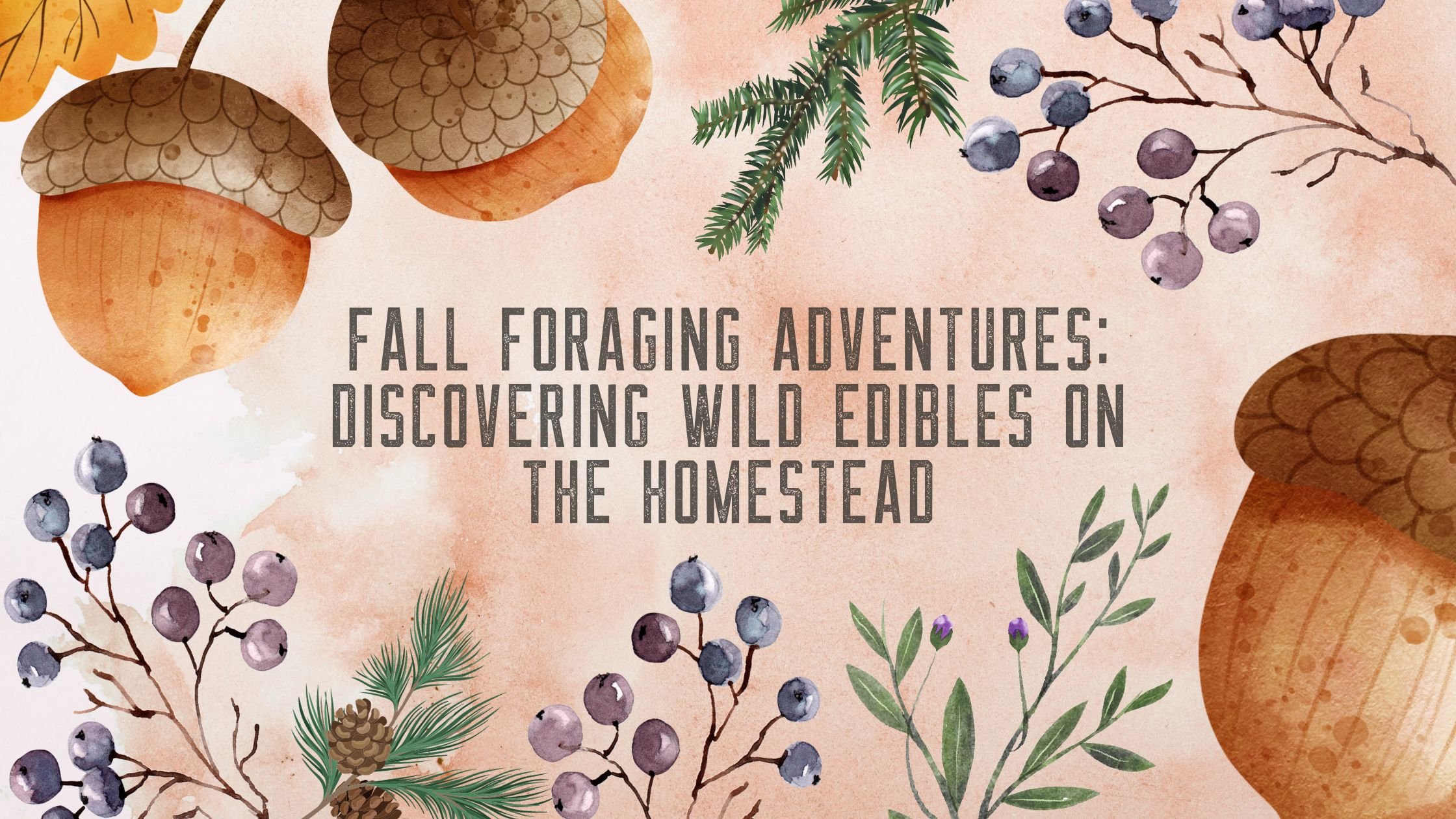Fall Foraging Adventures: Discovering Wild Edibles on the Homestead
As autumn paints the landscape with red, orange, and gold hues, homesteaders can embark on a unique and rewarding adventure—fall foraging. The season offers a bountiful array of wild edibles, adding a touch of wild harvest to the homesteading experience. In this exploration, we'll introduce you to some delectable treasures hidden in nature's pantry, sharing tips on identification and preparation to make your fall foraging adventures both safe and flavorful.
Identifying Edible Plants: A Beginner's Guide
Before venturing into the wilderness or even your backyard, it's crucial to familiarize yourself with the edible plants available during the fall season.
Here are a few commonly found wild edibles that you can start with:
Acorns (Quercus spp.):
Acorns, the nuts of oak trees, are abundant in the fall. While they require processing to remove bitter tannins, acorns can be ground into flour or roasted for a nutty flavor. Look for mature, brown acorns, and soak or boil them to reduce bitterness.
Rose Hips (Rosa spp.):
The fruit of wild roses, rose hips, ripen in the fall. These small, red or orange berries are rich in vitamin C. Harvest them after the first frost and use them in teas, jams, or syrups.
Pine Needle Tea (Pinus spp.):
Pine trees provide an excellent source of vitamin C through their needles. Harvest fresh, green needles and steep them in hot water to make a fragrant and invigorating tea. Be sure to identify the pine species correctly, as not all are suitable for consumption.
Wild Apples (Malus spp.):
Wild apple trees dot many landscapes, and their fruit is a delicious addition to fall foraging. Look for trees with small, tart apples, and use them in pies, jams, or simply enjoy them fresh.
Wild Grapes (Vitis spp.):
In the fall, wild grapevines bear clusters of small, flavorful grapes. Use them in jams, jellies, or enjoy them fresh. Ensure proper identification to distinguish between edible and potentially toxic varieties.
Foraging Tips for a Safe Harvest:
Use Reliable Field Guides:
Invest in reputable field guides or foraging apps specific to your region. These resources can be invaluable for identifying edible plants, providing details on their appearance, habitat, and potential look-alikes.
Attend Local Foraging Workshops:
Attend workshops or guided foraging tours led by experienced foragers in your area. These events offer hands-on learning opportunities and a chance to ask questions, ensuring a safer foraging experience.
Start with Easy-to-Identify Plants:
Beginners should focus on easily recognizable plants with minimal look-alike species. This reduces the risk of misidentification and helps build confidence in your foraging skills.
Learn About Look-Alikes:
Many edible plants have toxic look-alikes, so it's crucial to be aware of these potential pitfalls. Pay close attention to distinguishing features, such as leaf shape, color, and growth habits.
Respect Conservation Laws and Private Property:
Ensure you have the right to forage in a particular area, respecting both private property rights and local conservation laws. Always obtain permission if you plan to forage on private land.
Preparing and Enjoying Your Harvest:
Once you've identified and harvested your wild edibles, the next step is to prepare and savor the flavors of the season.
Here are some ideas for incorporating your foraged finds into your fall culinary adventures:
Wild Berry Jams and Sauces:
Turn your foraged berries, such as wild apples or grapes, into delicious jams, sauces, or syrups. These can be enjoyed on toast, as a topping for desserts, or even as accompaniments to savory dishes.
Acorn Flour Creations:
Processed acorns can be ground into flour, adding a nutty flavor to your baking. Experiment with acorn flour in recipes for pancakes, muffins, or even bread.
Pine Needle Tea Blends:
Combine pine needle tea with other herbs for flavorful blends. Consider adding dried berries or a touch of honey for added sweetness.
Rose Hip Infusions:
Make a vitamin C-rich tea or infusion using dried rose hips. Combine them with other herbs like mint or chamomile for a delightful and immune-boosting beverage.
Wild Apple Pies and Crisps:
Wild apples, though smaller and sometimes more tart than cultivated varieties, make excellent additions to pies, crisps, and other fall desserts.
Embracing the Harvest of the Season
Fall foraging opens the door to a world of natural abundance, allowing homesteaders to connect more deeply with the land they steward. As you embark on your fall foraging adventures, remember the importance of responsible and respectful foraging practices. Take joy in discovering the wild edibles that grace your homestead, and let the flavors of the season enrich your culinary creations. Through careful identification, thoughtful harvesting, and creative preparation, you can savor the unique tastes of fall while forging a deeper connection with the natural world around you. Happy foraging!

